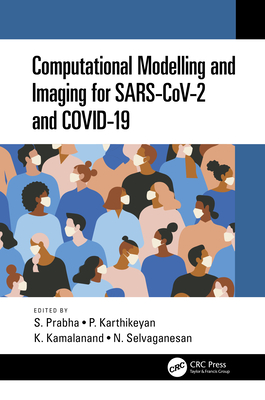Windows and Mirrors: Interaction Design, Digital Art, and the Myth of Transparency (Paperback)
暫譯: 《窗戶與鏡子:互動設計、數位藝術與透明神話(平裝本)》
Jay David Bolter, Diane Gromala
- 出版商: MIT
- 出版日期: 2005-09-23
- 售價: $580
- 語言: 英文
- 頁數: 194
- 裝訂: Paperback
- ISBN: 026252449X
- ISBN-13: 9780262524490
-
相關分類:
交互設計 Interaction-design
立即出貨(限量) (庫存=5)
買這商品的人也買了...
-
 Visual C#.NET 程式設計經典
Visual C#.NET 程式設計經典$650$514 -
 Win32 API 系統程式實例入門─使用Visual C++.NET實作
Win32 API 系統程式實例入門─使用Visual C++.NET實作$480$374 -
 Microsoft Windows Server 2003 架站實務
Microsoft Windows Server 2003 架站實務$580$458 -
 天才當家─留住人才的 34 道金配方 (Peopleware: Productive Projects and Teams, 2/e)
天才當家─留住人才的 34 道金配方 (Peopleware: Productive Projects and Teams, 2/e)$300$255 -
 Windows Server 2003 企業伺服器建構與管理實務
Windows Server 2003 企業伺服器建構與管理實務$620$484 -
 Windows CE.NET 程式設計 (Programming Microsoft Windows CE .Net, 3/e)
Windows CE.NET 程式設計 (Programming Microsoft Windows CE .Net, 3/e)$890$703 -
 ASP.NET 徹底研究進階技巧─高階技巧與控制項實作
ASP.NET 徹底研究進階技巧─高階技巧與控制項實作$650$507 -
 駭客防護實戰系列─木馬防護全攻略
駭客防護實戰系列─木馬防護全攻略$490$417 -
 中文輸入實力養成暨評量 (2005年版)
中文輸入實力養成暨評量 (2005年版)$320$253 -
 Oracle Database 10g DBA 技術手冊 (Oracle Database 10g DBA Handbook)
Oracle Database 10g DBA 技術手冊 (Oracle Database 10g DBA Handbook)$990$842 -
 新一代 ASP.NET 2.0 網站開發實戰-使用C# 以及 VB
新一代 ASP.NET 2.0 網站開發實戰-使用C# 以及 VB$550$468 -
 深入淺出 Java 程式設計, 2/e (Head First Java, 2/e)
深入淺出 Java 程式設計, 2/e (Head First Java, 2/e)$880$695 -
 C++ 語法暨程式庫式標準辭典 (C++ in a Nutshell)
C++ 語法暨程式庫式標準辭典 (C++ in a Nutshell)$780$616 -
 SIP 會談啟始協議操典
SIP 會談啟始協議操典$680$537 -
 防網路釣魚 + 側錄 + 間諜 + 詐騙 + 毒駭
防網路釣魚 + 側錄 + 間諜 + 詐騙 + 毒駭$480$379 -
 Linux Mail Server 技術實務─架設、稽核、防毒、防垃圾信
Linux Mail Server 技術實務─架設、稽核、防毒、防垃圾信$580$458 -
 CSS 功能索引式參考手冊
CSS 功能索引式參考手冊$390$308 -
 鳥哥的 Linux 私房菜基礎學習篇, 2/e
鳥哥的 Linux 私房菜基礎學習篇, 2/e$780$663 -
 Everyware: The Dawning Age of Ubiquitous Computing
Everyware: The Dawning Age of Ubiquitous Computing$1,540$1,463 -
 SQL 語法範例辭典
SQL 語法範例辭典$550$435 -
 Designing for Interaction: Creating Smart Applications and Clever Devices
Designing for Interaction: Creating Smart Applications and Clever Devices$1,880$1,786 -
 3ds max 8 質感傳奇
3ds max 8 質感傳奇$680$537 -
 Head First 深入淺出 HTML、CSS 與 XHTML (Head First HTML with CSS & XHTML)
Head First 深入淺出 HTML、CSS 與 XHTML (Head First HTML with CSS & XHTML)$800$680 -
 細談資料結構, 5/e
細談資料結構, 5/e$400$360 -
 ASP.NET 應用程式開發─與 AJAX 共舞
ASP.NET 應用程式開發─與 AJAX 共舞$620$490
相關主題
商品描述
Description:
In Windows and Mirrors: Interaction Design, Digital Art, and the Myth of Transparency, Jay David Bolter and Diane Gromala argue that, contrary to Donald Norman's famous dictum, we do not always want our computers to be invisible "information appliances." They say that a computer does not feel like a toaster or a vacuum cleaner; it feels like a medium that is now taking its place beside other media like printing, film, radio, and television. The computer as medium creates new forms and genres for artists and designers; Bolter and Gromala want to show what digital art has to offer to Web designers, education technologists, graphic artists, interface designers, HCI experts, and, for that matter, anyone interested in the cultural implications of the digital revolution.
In the early 1990s, the World Wide Web began to shift from purely verbal representation to an experience for the user in which form and content were thoroughly integrated. Designers brought their skills and sensibilities to the Web, as well as a belief that a message was communicated through interplay of words and images. Bolter and Gromala argue that invisibility or transparency is only half the story; the goal of digital design is to establish a rhythm between transparency--made possible by mastery of techniques--and reflection--as the medium itself helps us understand our experience of it.
The book examines recent works of digital art from the Art Gallery at SIGGRAPH 2000. These works, and their inclusion in an important computer conference, show that digital art is relevant to technologists. In fact, digital art can be considered the purest form of experimental design; the examples in this book show that design need not deliver information and then erase itself from our consciousness but can engage us in an interactive experience of form and content.
Jay David Bolter is Wesley Professor of New Media and Director, Center for New Media Research and Education in the School of Literature, Communication, and Culture at Georgia Tech University.
Diane Gromala is Associate Professor in the School of Literature, Communication, and Culture at Georgia Tech University.
Table of Contents:
Series Foreword vii Acknowledgments ix Introduction 2 1 TEXT RAIN: The Digital Experience 8 2 Wooden Mirror: The Myth of Transparency 30 3 Nosce Te Ipsum: Seeing Yourself in the Digital Mirror 58 4 Magic Book: The New and the Old in New Media 76 5 Fakeshop: The Diversity of New Media 94 6 T-Garden: The Materiality of New Media 114 7 Terminal Time: Design in Context 130 8 The Art Gallery of SIGGRAPH 2000 142 9 Before and After SIGGRAPH 2000 150 Colophon: Excretia and Reading as a Reflective Experience 162 Appendix 170 References 174 Index 177
商品描述(中文翻譯)
描述:
在《Windows and Mirrors: Interaction Design, Digital Art, and the Myth of Transparency》中,Jay David Bolter 和 Diane Gromala 主張,與 Donald Norman 的著名格言相反,我們並不總是希望電腦成為「隱形的信息設備」。他們表示,電腦並不像烤麵包機或吸塵器;它更像是一種媒介,現在正與印刷、電影、廣播和電視等其他媒介並肩而立。作為媒介的電腦為藝術家和設計師創造了新的形式和類型;Bolter 和 Gromala 希望展示數位藝術對網頁設計師、教育技術專家、平面藝術家、介面設計師、人機互動專家,以及任何對數位革命的文化意涵感興趣的人所能提供的價值。
在1990年代初,萬維網開始從純粹的文字表現轉變為一種用戶體驗,其中形式和內容徹底整合。設計師將他們的技能和敏感度帶入網路,並相信信息是通過文字和圖像的相互作用來傳達的。Bolter 和 Gromala 主張,隱形或透明性只是故事的一半;數位設計的目標是建立透明性(透過技術的掌握而實現)與反思之間的節奏——媒介本身幫助我們理解我們的體驗。
本書探討了來自 SIGGRAPH 2000 藝術畫廊的近期數位藝術作品。這些作品及其在一個重要計算機會議中的納入,顯示數位藝術與技術專家是相關的。事實上,數位藝術可以被視為實驗設計的最純粹形式;本書中的例子顯示,設計不必僅僅傳遞信息然後從我們的意識中消失,而是可以讓我們參與形式和內容的互動體驗。
Jay David Bolter 是喬治亞理工學院文學、傳播與文化學院新媒體的 Wesley 教授及新媒體研究與教育中心主任。
Diane Gromala 是喬治亞理工學院文學、傳播與文化學院的副教授。
目錄:
系列前言
致謝
導言
1. TEXT RAIN:數位體驗
2. Wooden Mirror:透明性的神話
3. Nosce Te Ipsum:在數位鏡中看見自己
4. Magic Book:新媒體中的新與舊
5. Fakeshop:新媒體的多樣性
6. T-Garden:新媒體的物質性
7. Terminal Time:設計的背景
8. SIGGRAPH 2000 藝術畫廊
9. SIGGRAPH 2000 前後
後記:Excretia 與閱讀作為反思經驗
附錄
參考文獻
索引































